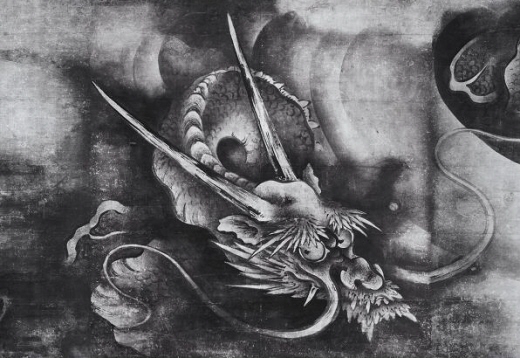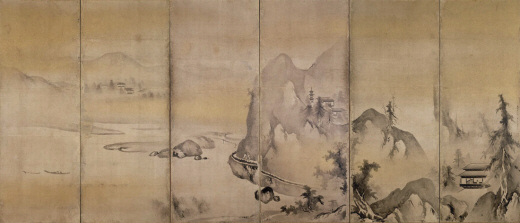Biography of Japanese Painter
Kaiho Yusho (1533 - 1615)
Japanese-style painter flourished through the Azuchi-Momoyama period (1573-1603) and the early part of the Edo period (1603-1868).
Yusho was born in the second year of the Tenbun era (1533) as the 5th son
(or 3rd son) of Kaiho Tsunachika, who was a Samurai retainer serving the
Azai daimyo family in Ohmi Province (present Shiga Prefecture).
When Yusho was two years old, his father died in battle, and, Yusho entered
a Zen Buddhist monastery at Tofuku-Ji Temple in Kyoto.
In parallel with Zen practice, he studied the Kano style painting.
In 1573, the Azai daimyo family went to ruin and also all Yusho's brothers
died in action.
Yusho returned to a Samurai and tried to resuscitate the Kaiho family.
Later, Toyotomi Hideyoshi, the sovereign in the Azuchi-Momoyama period,
acclaimed Yusho's talent for painting so that Yusho decided to make a living
as a painter.
Suiboku paintings on large screens are common in Yusho's works, however,
we can also find colorful Byobu-e paintings on gold colored foundation
coat.
Yusho deceased in the 20th year of the Keicho era (1615) at the age of
83.
His son (Kaiho Yusetsu) succeeded his painting style.





